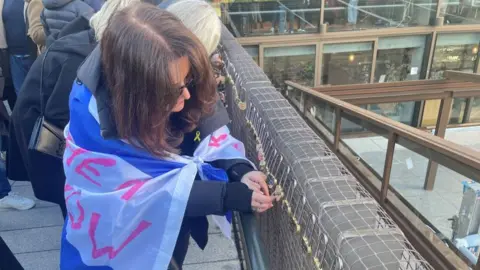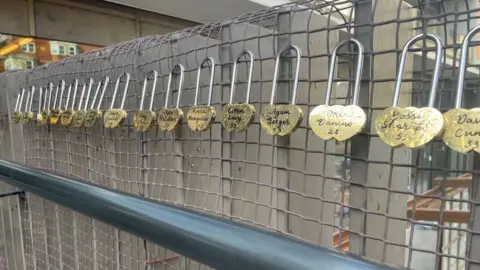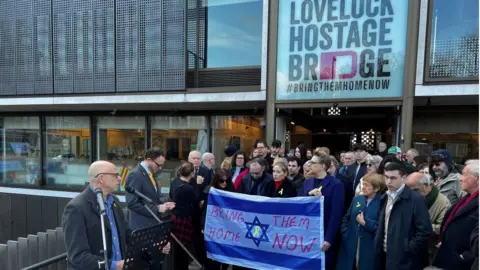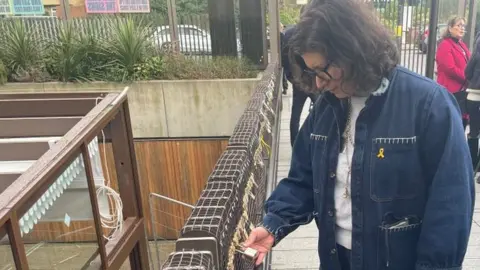Lovelock Hostage Bridge to recognise Israeli hostages in Gaza
 Tom Grundy/BBC
Tom Grundy/BBCA new art installation recognising Israeli hostages held in Gaza has been opened in north London.
The Lovelock Hostage Bridge was initially made up of 100 padlocks, each inscribed with the names of those taken on 7 October.
Some of the padlocks have been left blank to represent those hostages who have died.
The installation is located on the walkway outside JW3, London's main Jewish community centre in Camden.
 Tom Grundy/BBC
Tom Grundy/BBCFamily members of the hostages attended the opening and signed their own padlocks.
Prominent members of the Jewish community, including Dame Maureen Lipman, Sir Simon Schama and Dame Margaret Hodge also attended.
The installation was designed by artist Marcel Knobil, who said: "Lovelock bridges around the world have become symbolic of people displaying love for each other, this lovelock hostage bridge does something more than that, it helps display our love and solidarity for the hostages."
 Tom Grundy/BBC
Tom Grundy/BBCHe invited people to send their own signed padlocks to add to the bridge.
"Whatever creed, colour, belief, please come and show your sympathy by attaching a lock," he added.
 Tom Grundy/BBC
Tom Grundy/BBCDr Sharone Lifschitz, whose mother was released from Gaza in October, was one of the first people to attach a lock to the bridge.
Her father, Oded Lifschitz, is still being held hostage.
She said: "We are [on] day 128 and it's human nature to want to move on, yet for me it is still 7 October, my father is still there....I have to do everything I can to bring him back."
Dame Maureen Lipman, who officially opened the bridge, said: "It's a symbol, my religion is full of symbols....it screams louder than words....I hope that it sends out ripples and sends out waves."
Other famous faces including David Walliams, Mick Hucknall and Rachel Riley signed padlocks in advance.

Listen to the best of BBC Radio London on Sounds and follow BBC London on Facebook, X and Instagram. Send your story ideas to [email protected]
